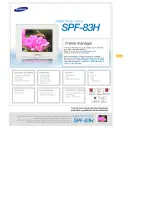
115
Technical Notes—Caring for the Camera
Storage
When the camera will not be used for an extended period, remove the
battery, and store the battery in a cool, dry area with the terminal cover in
place. To pre vent mold or mil dew, store the cam era in a dry, well-ven ti lat ed
area. Do not store your cam era with naph tha or cam phor moth balls or in
lo ca tions that:
• are poorly ventilated or subject to humidities of over 60%
• are next to equipment that produces strong elec tro mag net ic fi elds, such
as televisions or radios
• are exposed to temperatures above 50 °C/122 °F (for example, near a
space heater or in a closed ve hi cle on a hot day) or below –10 °C (14 °F)
Cleaning
Camera
body
Use a blower to remove dust and lint, then wipe gently with a soft,
dry cloth. After using the camera at the beach or seaside, wipe off
sand or salt with a cloth lightly dampened in distilled water and dry
thor ough ly.
IMPORTANT
: Dust or other foreign matter inside the camera may
cause damage not covered under warranty.
Lens,
mirror, and
viewfi nder
These elements are made of glass and are easily dam aged. Remove
dust and lint with a blower. If using an aerosol blower, keep the can
vertical to prevent the discharge of liquid. To remove fi ngerprints and
other stains, apply a small amount of lens cleaner to a soft cloth and
clean with care.
Monitor
Remove dust and lint with a blower. When removing fi ngerprints
and other stains, wipe the surface lightly with a soft cloth or cham-
ois leath er. Do not apply pressure, as this could result in damage or
malfunction.
The Monitor
Should the monitor break, care should be taken to avoid injury caused by broken
glass and to prevent liquid crystal from entering your eyes and mouth.
The Control Panel
Rarely, static electricity may cause the control panel to brighten or darken. This does
not indicate a malfunction; the display will shortly return to normal.
Caring for the Camera















































